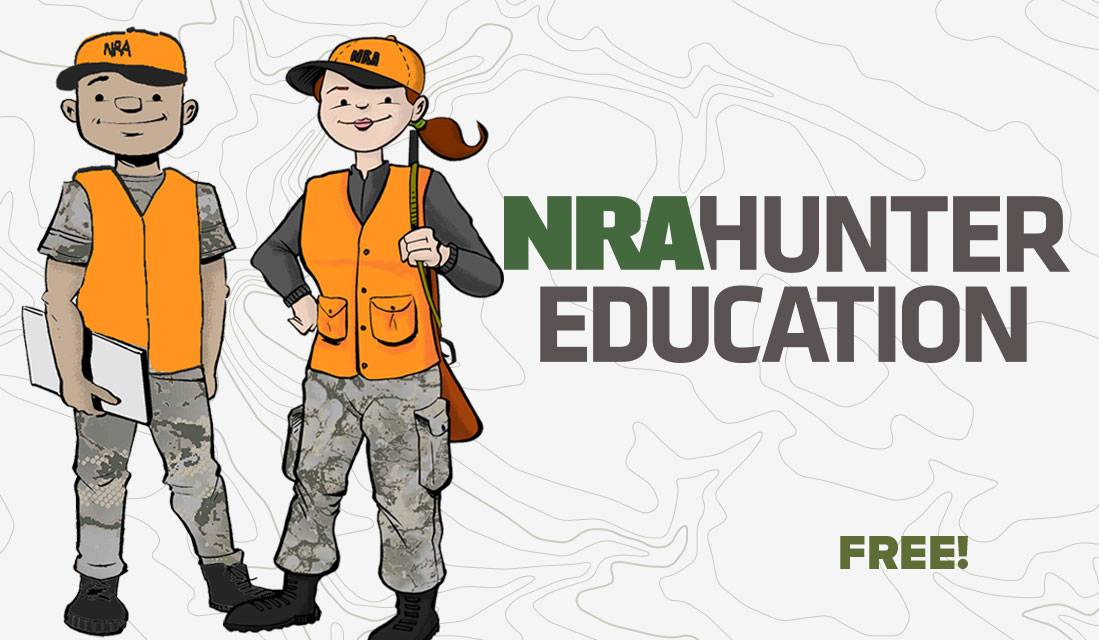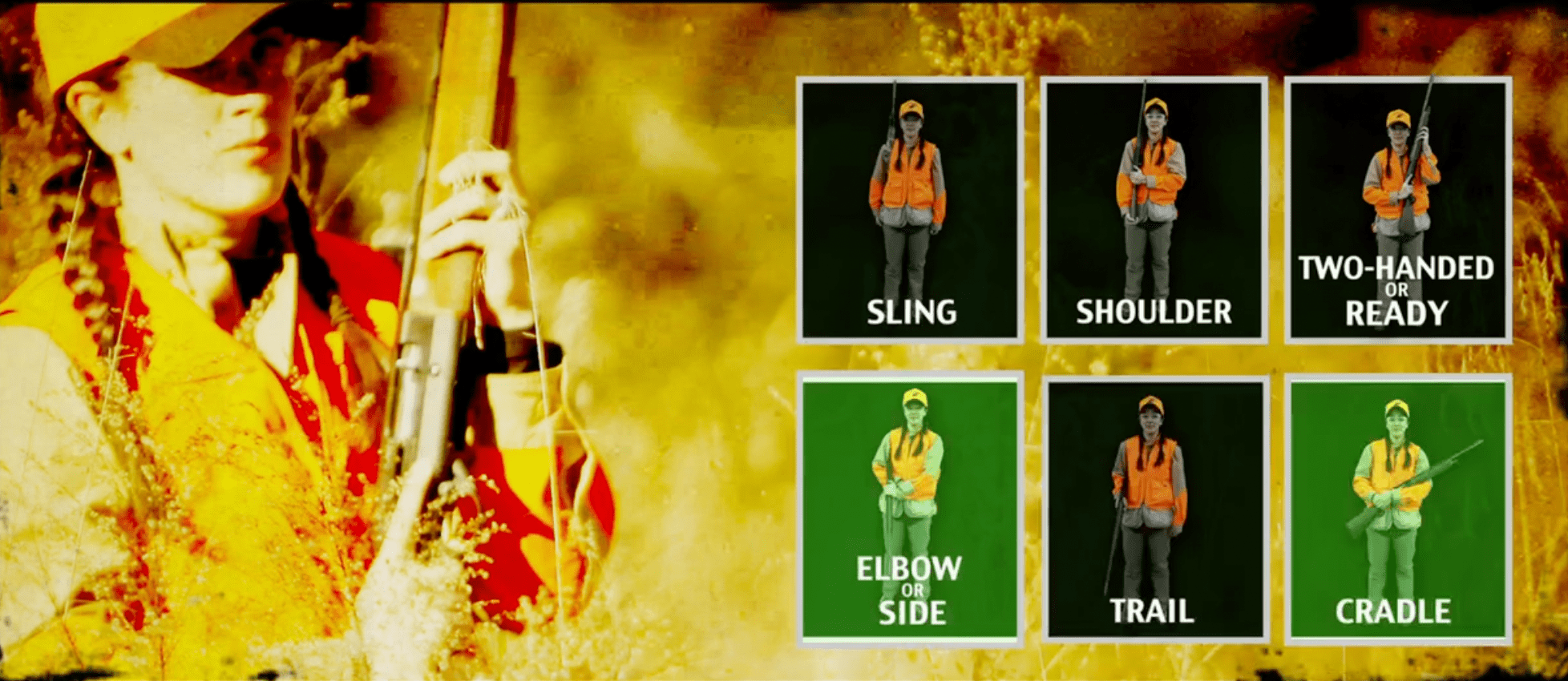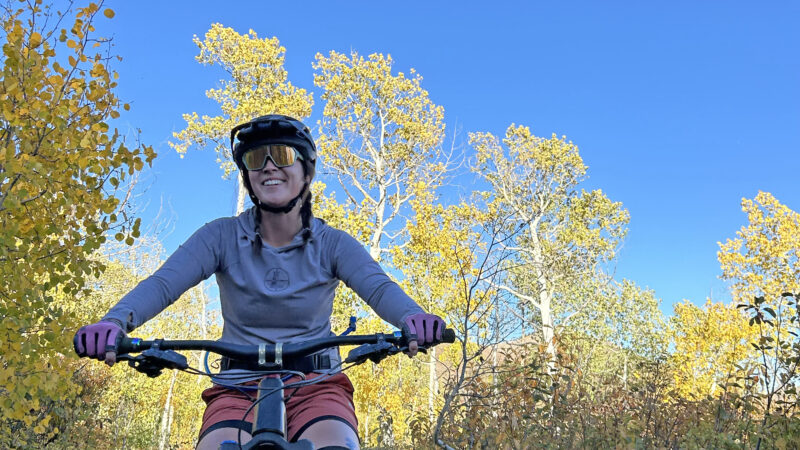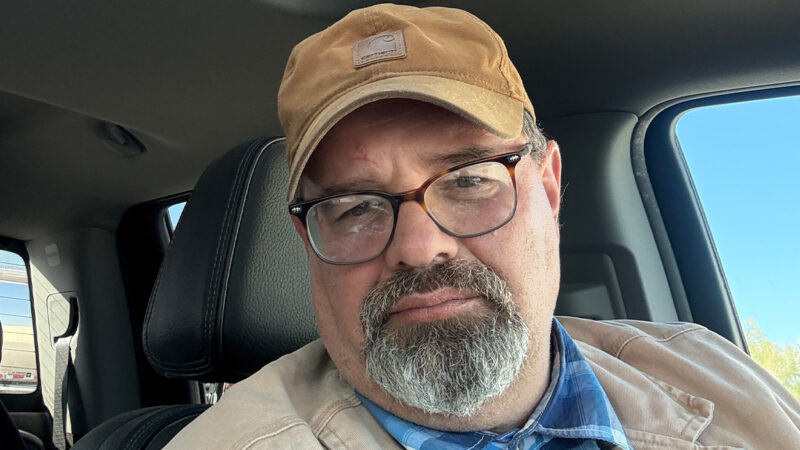A Digital Revolution in Hunter Education
Hunter education, the state-managed pipeline that reliably delivers more than a half-million freshly certified hunters to the woods and fields of America every year, is undergoing a transformation of technology, consolidation, and bare-knuckle competition as various players vie for eyeballs, public funds, and students.
Just last month, the biggest provider of hunter education in America was acquired by an Australian private-equity firm, raising the possibility that millions of dollars of hunter education funds may be leaving the United States.
Meanwhile, new vendors are rushing to profit from the guaranteed market of new customers, generally 12- to 14-year-olds but an increasing number of adult-onset hunters, that are required by state agencies to take approved courses and pass a certification test before they can buy a hunting license.
This new wave of digital hunter educator is leveraging artificial intelligence, social currency, CGI animations, and live-action video to increase the appeal of instruction that historically has been delivered by volunteers with varying talent as teachers. Nationally, slightly more hunter ed students are certified through online courses than they are through traditional in-person courses.
“Today’s student just learns differently than they did 10 or 20 years ago,” says Bill Cline, who administers hunter education programs for Florida’s Fish and Wildlife Conservation Commission. “We have to meet students where they are, which is why you’re seeing so many new players and products in the space. What hasn’t changed is our goal to prepare beginning hunters to be safe with firearms, knowledgeable about traditional skills, and successful in the field.”
Cline and his state-agency counterparts across the country are navigating new content and delivery requirements and managing a corps of volunteer instructors that’s getting older and less technologically savvy by the year.
For all the news about declining hunting-license sales and numbers of American hunters, the number of students taking hunter education courses is actually pretty consistent. In 2022, some 548,000 students took basic hunter education courses, down a bit from the Covid-19-fueled spike in interest and participation in hunting and outdoor recreation. Last year, according to the International Hunter Education Association (IHEA), 566,800 students took basic hunter education.
The Covid-19 pandemic did more than just boost interest in hunting. It also reshaped hunter education delivery in many states, as quarantines and social distancing made traditional classroom instruction either problematic or impossible. Out of pandemic-era necessity, online courses flourished. As hundreds of thousands of prospective hunters have returned to classrooms to receive mandatory hunter ed, online instruction remains the preferred delivery mechanism for about half of America’s hunter education students, just under 300,000 in 2022.
Most of these online students pay between $25 and $35 for state-approved courses, which means the current market for online instruction is between $7.5 and $10.5 million annually, and trending upward as digital delivery gets better and more tailored to each student’s learning preferences. In-class instruction is generally free to students.
A Competitive Landscape
Kalkomey, the largest provider of instructional materials and course support, pioneered the online space in 2002 with the creation of hunter-ed.com. Founded by Texas boat dealers Kurt and Cindy Kalkomey in 1995 to deliver boating safety education and certification courses, Kalkomey itself was acquired by private-equity firms in 2015 and again in 2020. After those acquisitions, it began systematically purchasing its competitors, leading to industry consolidation.
Last month, just a week after it served as the top sponsor of the IHEA’s annual convention in Branson, Missouri, Kalkomey announced its sale to Macquarie Group, a private equity firm that operates in 34 countries from headquarters in Australia.
After a half-century absence from the space, the National Rifle Association has re-entered hunter education with a free course that it’s trying, with mixed results, to get adopted by state agencies as an alternative to paid online courses.
And just this month, a new online vendor, Recademics, entered the online instruction space with plans for a new series of courses that feature video segments from Randy Newberg’s Outdoor Class and plans for digital mentoring well beyond basic hunter education. The first of these courses is waiting to be accredited by the IHEA before it can be offered as a state-certified curriculum.

The pace and intensity of change just in the last few years is roiling hunter education, which has remained relatively static since certification became a legal requirement to buy a hunting license starting in New York State in 1949. Generations of American hunters have experienced the same rite of passage that their fathers and grandmothers did: sitting for hours in an after-school classroom or church basement or public library while volunteer instructors demonstrate how guns work and how to operate them safely in the field. In the last 30 years, the certification course has added segments on wildlife management, treestand safety, situational ethics, and outdoor survival, all in service to the goal that a hunter-ed graduate in Colorado will have the same knowledge and preparation to hunt that a North Carolina hunter will have.
Even as it’s become an overlooked factor in America’s hunting landscape, hunter education has increased in relevance as the overall number of hunters in America has stagnated.
“Hunter ed is something we take for granted,” says Mitch Strobl, a former Kalkomey executive and one of the founders of Recademics, which is expected to offer its first online hunter ed course sometime later this year. “If you think about it at all, you might consider it a tedious but necessary requirement. But what most people don’t understand is that it’s a big, complex ecosystem with a lot of moving parts, between federal funds, volunteer management, instructional standards, reciprocity between states, and delivery mechanisms.”
It’s foundational to perpetuating America’s tradition of safe and informed citizen-hunters. It also fuels what’s been called America’s “deer industrial complex” since each new hunter generally becomes a customer for gun, ammunition, and sporting-goods manufacturers.
The relationship between customer and industry is further cemented by the use of federal sporting-goods excise tax revenue (often called Pittman-Robertson funds, or P-R, after the sponsors of the 1937 legislation) in states’ hunter ed programs. This tax, derived from the sale of guns, ammunition, and archery equipment, enables agencies to buy course materials and pay personnel to deliver hunter education. Volunteer instructors record their hours, which are converted into federal payments to agencies.
P-R funds add up to serious money. Many states each receive over $7 million in federal excise-tax revenue annually, with funds going to everything from construction of shooting ranges to paying for hunter-ed and bowhunter education manuals and classroom materials.
This traditional “ecosystem,” as Strobl describes it, is calibrated to be self-sustaining, and it’s the reason hunter education is free to most in-person students. Costs are covered by federal P-R funds. But online courses don’t use volunteer instructors, which throws off the funding calculus, and requires students to pay for their instruction.
Enter the NRA

NRA
Peter Churchbourne’s solution not only provides online hunter education for free, but it also offers a path to compensation for states that offer his program.
Now the managing director of NRA Hunting, Churchbourne has for the past few years tried to get state agencies to accept the NRA’s free course as an alternative to paid courses, but has met opposition that he says is due to resistance to change and what he calls existing vendors’ “inappropriate influence” over state agencies.
Seven years ago, Churchbourne was tasked with getting a new NRA executive, who had never hunted before, certified so he could participate in an industry hunt.
“This was in September, and we looked on the Virginia DNR website for the closest hunter education class, but it was eight hours away,” recalls Churchbourne, who noted that the executive wasn’t thrilled about the prospect of sitting in a classroom of 12-year-olds. “So we opted for online [hunter ed], and were surprised to find that we had to pay for it. But, okay, we didn’t really have an option, so my colleague took the course at work. Every now and then I’d check in with him, looking over his shoulder at the instructional materials, and it frankly wasn’t that good. There were aspects of it that were unclear or just dead wrong, and the interface was just sort of clunky.”
The executive passed the course and was certified to hunt, but Churchbourne said the experience was instructive in other ways. “I had always thought that hunter education was supposed to be free, but here was a paid course that was frankly underwhelming.”
Unrelated to hunter education, the NRA at the time was developing a learning management system (LMS) to deliver online firearms instruction to its thousands of volunteers.
“We paid over $1 million for that LMS, and in a meeting where we were discussing other uses for it, the light just went on with me,” says Churchbourne. “I told my executives, ‘Let’s build a best-in-class hunter education module’ on our platform.”
Delivering hunter education aligns closely with the NRA’s charter, which directs the organization to promote marksmanship and firearms training. The organization is now more closely associated with 2nd Amendment lobbying and litigation, but the NRA developed America’s first hunter safety program in New York State in 1949. That course focused on firearms function, safe gun handling, and advocated for public-safety measures like mandatory blaze orange for hunters.
By the 1970s, “Hunter Ed” was required in most states, which frequently used NRA course materials, but as state fish-and-game agencies took over hunter education, administrators started selecting other vendors for manuals and teaching aides. Meanwhile, the NRA shifted to other priorities, leaving hunter education to a new collection of for-profit entities.
Until Covid changed things, most state agencies taught basic hunter education (along with bowhunter education, trapper education, boating-certification courses, and off-road and snowmobile courses) pretty much the same way. Volunteer instructors were deputized to do most of the classroom instruction, with administrative help from agency staff. Currently, about 45,000 volunteer instructors deliver hunter-ed courses around the country.
Churchbourne says the NRA isn’t interested in replacing classroom instruction, but rather wants to offer a viable, instructionally sound alternative to paid courses.
The online NRA course is accepted by 14 states, and in order to sweeten the appeal for agencies, the free course is eligible for P-R matching funds for the states that offer it. Because the course is free, the U.S. Fish & Wildlife Service reckoned, it can be considered an in-kind donation up to the average value of paid courses available in a state. Not every state qualifies, because their volunteer systems already give them enough P-R match to fund their programs, but it’s an important point of differentiation between the free and paid programs.
Even with that incentive, Churchbourne has met resistance.
“We want to give students an option,” he says. “Not everyone is going to want to sit in a classroom for a week, and not everyone is going to be able to afford to pay for hunter education. We created a viable option that we think is just as good or better than paid courses, but seven years in we can only get approval from a handful of states. Why? Because Kalkomey and other vendors are creating an uncompetitive landscape with high barriers to entry for their competitors.”
Unable to break into the state-agency inner circle, the NRA is using its LMS to provide online instruction to non-governmental entities, hosting the Boone and Crockett Club’s Fair Chase and Hunter Ethics Course and the online Hunt Safe certification course offered by the Native American Fish and Wildlife Society.
Through the First Hunt Foundation, the NRA also created the first online mentoring platform through its LMS.
“We’ve done all this to help the American hunter,” says Churchbourne. “We did this for free, and we keep investing for the future because I believe every American needs access to free, best-in-class online hunter education, and that is what we do.”
A Digital Future

HunterEd.com
The NRA may also be interested in online market share for the same reasons its competitors are: it’s likely where hunter education, boating education, and other outdoor activities that require certification will take place in the future.
“Covid saw an uptick in participation in outdoor activities, with participation rates and outdoor gear purchases spiking,” says Blake Clark, Kalkomey’s CEO, who adds the company has no plans to change its name or business strategy after its acquisition by Macquarie. “These numbers came down from 2021 to 2022, but they remain on the uptick and are well above the pre-Covid levels. As it relates to us, the big change has been the movement from offline training to online training. People have realized it’s faster, cheaper, and more effective to take the coursework online on their own schedule, using advanced technology and the best content, than to spend multiple days — often over multiple weeks — taking presential training. There’s still a lot of offline training going on, but today the majority is online. We couldn’t say that in 2018.”
The hunter education marketplace remains lucrative because once a vendor acquires a client state agency, their customers come along essentially for free.
“In hunter education, there’s roughly 50 markets,” says Alex Baer, executive director of the IHEA, which provides accreditation to states’ curricula, whether delivered in classrooms or online. “That appeals to some companies, because you don’t have to spend much money to find the customer. The customer actually comes to you in a regulated space.”
There are additional reasons why hunter-education delivery is lucrative.
“A customer’s marketing contact is currency in today’s business world,” says Baer. “Especially in the hunting space, it can be very difficult to find a new customer. You can’t talk about hunting or guns on social media easily. You can’t show dead animals. There are only a couple ways to learn who hunters are without spending a ton of marketing money to find them. If you don’t have to do that, because you have a contract with a state and they’re already your customers, then you can be successful with a digital product, which after it’s created has a lower cost to distribute and to scale. You have an opportunity for a technology business without a typical major expense to be successful. That’s a very valuable thing.”
But Baer says that without investment of private vendors in online delivery, Covid would have cratered the hunting industry, starting with hunter education.
“If there had been no Kalkomey or other providers that had gone through the steps to get adoption by the states, which can take many years to achieve, Covid would have been devastating,” says Baer. “If we didn’t already have online options in place, there’s no way we could have pulled it together fast enough. Instead of the 600,000 students who went through hunter ed in 2020 and again in 2021, our biggest number in decades, there would have been record lows. Can you imagine what that would have looked like? Instead of celebrating that we had more people in hunter education and buying licenses and participating in the outdoors, we would have a missing cohort of over a million hunters.
“I think the other untold story is that online instruction appears as safe as traditional instruction,” adds Baer. “We’re seeing the same or fewer incidents in the field over the last couple years, even as we have more online students.”
While the IHEA spends most of its time and resources ensuring that states’ basic hunter education and bowhunter education are delivered with instructional rigor and materials that ensure hunting remains safe, Baer is interested in creating opportunities to move beyond basic hunter education.
“We can never take our eye off our basic courses,” he says. “Hunting is a safe activity because of hunter education. Over the last 50 years, hunting-related injuries have decreased dramatically, even as populations of deer, wild turkey, elk, geese, and other game species have risen to record levels. But we know there’s a softening of hunter retention and public support for hunting, and we think there’s a place for 200- and 300-level hunter education” that appeals to adult-onset hunters and students who are moving along the education continuum.
That’s precisely the community that Mitch Strobl hopes to serve when Recademics comes online.
“Competition in the space is healthy because it breeds innovation,” says Strobl. “States and students have more options than ever, and that’s helped hunter education position itself to take on the hard but necessary job of mentoring not only new hunters but existing hunters.”
Strobl is partnering with both the Rocky Mountain Elk Foundation and Newberg’s Outdoor Class platform to help students be more successful in the field. Similar to the NRA’s digital mentoring course, Recademics intends to push into what might be called 201- and 301-level hunting-education instruction.
“We aim to take hunter ed beyond a one-and-done course and to foster lifelong learners and stewards of conservation and our hunting heritage,” says Strobl. “Today’s hunters don’t always have the same traditional mentor/mentee relationship that many of us had. It’s up to us to provide that, and we think we can do it with a digital platform.”
The post A Digital Revolution in Hunter Education appeared first on Outdoor Life.
Source: https://www.outdoorlife.com/conservation/online-hunter-education-revelution/


